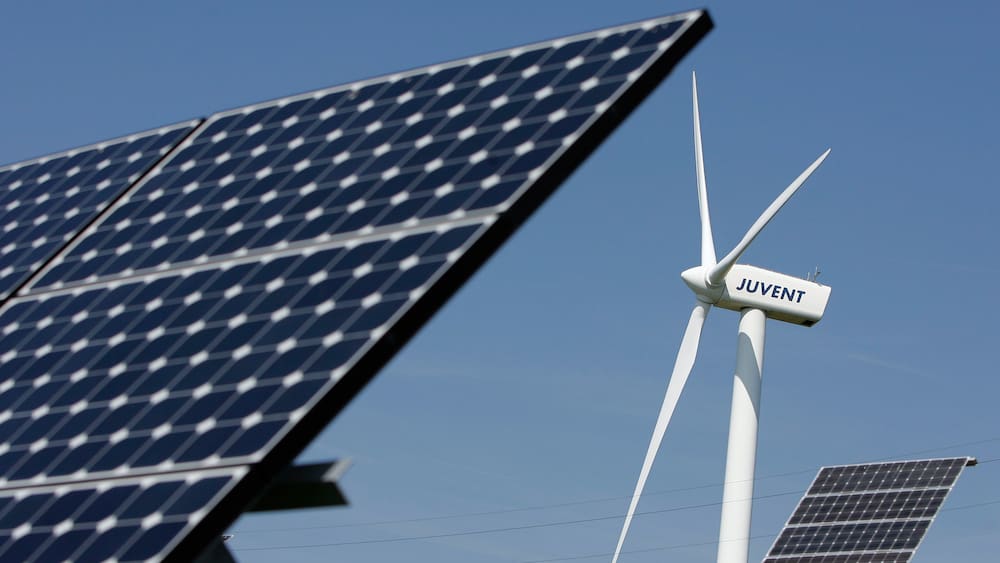It was a major setback in Switzerland’s fight against climate change – and a shock to Environment Minister Simonetta Sommaruga (61). With 51.6 percent of the vote against, voters rejected the new CO₂ law on Sunday. This means that the goals of the Paris climate agreement can no longer be met. By 2030, greenhouse gas emissions are set to be halved from 1990 levels.
An assessment by the Swiss Energy Corporation (SES) published Thursday indicates how important the need for action is in reality. Switzerland has a large share of electricity from hydropower. However, it is now important for our country to build facilities for the production of renewable electricity. Here, hydropower no longer has much potential.
Wind instead of corn, solar instead of oil
But with wind and solar power, the potential is huge. But it is precisely here that our country cannot move. On the other hand, it is important to compensate for the gradual exit from nuclear power. On the other hand, more renewable electricity is needed to phase out fossil fuels, because CO2 law or not: Petrol and diesel cars are increasingly being replaced by electric vehicles, and oil and gas heating systems are disappearing due to their replacement by heat pumps.
But only: this requires more electricity from renewable sources. But when it comes to boosting these energies, Switzerland is at risk of being left behind: “Compared to other European countries, Switzerland still lags behind most countries in terms of per capita solar and wind energy production,” according to SES. There is an urgent need for better investment conditions for domestic electricity production.
Rank 24 out of 29
Specifically, in a short study, SES compared per capita solar and wind energy production in Switzerland and 27 countries in the European Union as well as in Great Britain. The result: Switzerland ranks 24th – just ahead of the Czech Republic, Hungary, Slovenia, Slovakia and Latvia.
Only 4.7 percent of electricity consumption in this country will be generated using photovoltaics and wind energy. In Denmark, for example, it’s 54 percent. Compared to the nine neighboring countries, Switzerland comes in second to last.
Northern European countries have been at the top of the list for years: Denmark, Germany and Sweden produce far more wind energy than Switzerland. Ireland has now removed Germany from the top three.
If you look at photovoltaic only, Switzerland ranks eighth, overtaken by Germany, Malta, Italy, Belgium, Spain, Greece, the Netherlands, and in some cases also by more northern, flatter countries with less solar radiation.
The federal government should clearly increase its expansion goals
Based on these findings, the SES is calling on politicians to act. This is the only way to achieve climate goals and enhance supply security.
The next opportunity to do so will soon be forthcoming: The Federal Council plans to deliver its message on the new energy law in June. “In law, expansion targets in particular must be clearly increased so as to align with climate goals,” comments Felix Nipkow of SES.
Energie-Stiftung expects an increase of 12 to 17 times compared to today’s production by 2035. Today, about 311 kWh per capita will be produced from solar and wind energy. By 2035, from 4,000 to 5,000 kWh – from photovoltaic cells should be in advance. For comparison: Germany today produces 2,200 kWh per capita from solar and wind energy.
The National Assembly wants to close the funding gap
The National Assembly has just taken a first step in this direction. He wants to promote new wind power, micro-hydropower, biogas, geothermal systems, and photovoltaics from 2023 with one-time investment contributions. He agreed to give the interview on Wednesday.
Renewable energies have so far been mainly supported by the Directed Feed Tariff (KEV). This ends at the end of 2022. With its decision, the National Assembly wants to prevent a loophole in the financing instruments. (dB)

“Typical entrepreneur. Lifelong beer expert. Hipster-friendly internet buff. Analyst. Social media enthusiast.”










More Stories
Treasure from a Baltic Shipwreck: Champagne and Mineral Water Discovered – News
US Election Year 2024 – Trump Celebrated as Pop Star at Party Conventions – News
Donald Trump’s photo after assassination attempt: What does it mean? – News